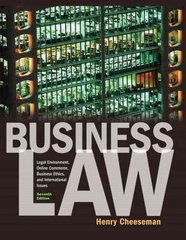Question
Recall the case where the government a fixed tax per unit sold. That is, if a consumer pays p for a good, the firm has
Recall the case where the government a fixed tax per unit sold. That is, if a consumer pays p for a good, the firm has to pay t to the government and keeps p - t for itself.
Assume that the market demand function is strictly decreasing, and that the market supply function is strictly increasing, and that both of these functions are continuous. Let p* denote the equilibrium price of the good before tax and p** denote the equilibrium price that consumers pay for the good after the tax t. Show that p** - p* < t. That is, the change in price that consumers must pay is less than the amount of tax.
Derive a formula for the tax incidence evaluated at 0 zero.
Explain why, with the ceiling price policy, there will be people who would want to buy the good but will be unable to do so. Hint: How many units get produced under this policy? How do these compare?
Define what an equilibrium is when the subsidy level is s. Hint: Your sentence should probably begin "An equilibrium is a price-quantity pair (p*, q*) such that... " and reason by analogy to taxes.
Show that for the maximum price p that satisfies 0 < p < p*, and S (p<0), ther is a subsidy s such that (i) the equilibrium price consumers pay under the subsidy policy is exactly p. and the equilibrium quantity produced and consumed is D (p).
5. Let D be the market demand function for a certain good; assume this is a strictly decreasing, and continuous function. Let S be the market supply function for that same good; assume this is a strictly increasing, and continuous function. The government feels that the equilibrium price for this good, which we denote by p , is too high, so it does the following: it names a price p that satisfies 0 < p < p and makes it illegal to sell the good at a price above p. This is called a "maximum price" or "ceiling price". You hear the news and decide to walk into the president's office (because, apparently, anyone can just waltz into the president's office) and explain that this is a bad idea, because there will be people who will want to buy the product but will not be able to. You explain that there is a better situation for consumers: set a subsidy s so that, for every unit the producers sell, the government pays the producers an extra s. This tool, you explain, will make it so that the consumers pay the same price than with the maximum price policy, but there will be no excess demand.
6. A standard thought you hear on the streets are as follows, "corporations are evil because when the government taxes them, they pass on the tax to consumers and we end up paying the tax they should pay". Let's think about this. Assume the demand and supply curves for a product (widgets) are S(p) = 100p and D(p) = 400/p.
Suppose the government levies a tax of $0.5 per widget sold. What price will consumers pay in the post equilibrium tax?
Suppose now the tax is of 10% of the tax sales. That is, if the sale price is p then the government gets 0.1p. Define what an equilibrium with taxes is.
In the equilibrium with the 10% tax, is it true that consumers will pay 10% more than they paid before the tax?
The previous bullet points highlight why the common wisdom at the beginning of the problem is flawed. Explain what economic forces are at play that make the original argument false.
7. Suppose that there are two consumers and three firms. Demands are D1(p, I1) = I1 2p and D2(p, I2) = I2 3p where I1 and I2 are the incomes of person 1 and 2 respectively. Suppose that firms have supply functions S1(p) = S2(p) = S3(p) = p (i.e. all firms have the same supply function). For the rest of this problem you may assume that person 1 has income 2 and person 2 has income 6.
Calculate market demand and supply.
For each tax rate t [0, 1] calculate the equilibrium prices and quantities. Hint: equilibrium prices and quantities will depend on the tax level, of course.
Calculate the price elasticity of market demand and market supply
Calculate the incidence of the tax for each tax rate t and check that the formula we gave in lecture holds.
Step by Step Solution
There are 3 Steps involved in it
Step: 1

Get Instant Access to Expert-Tailored Solutions
See step-by-step solutions with expert insights and AI powered tools for academic success
Step: 2

Step: 3

Ace Your Homework with AI
Get the answers you need in no time with our AI-driven, step-by-step assistance
Get Started


